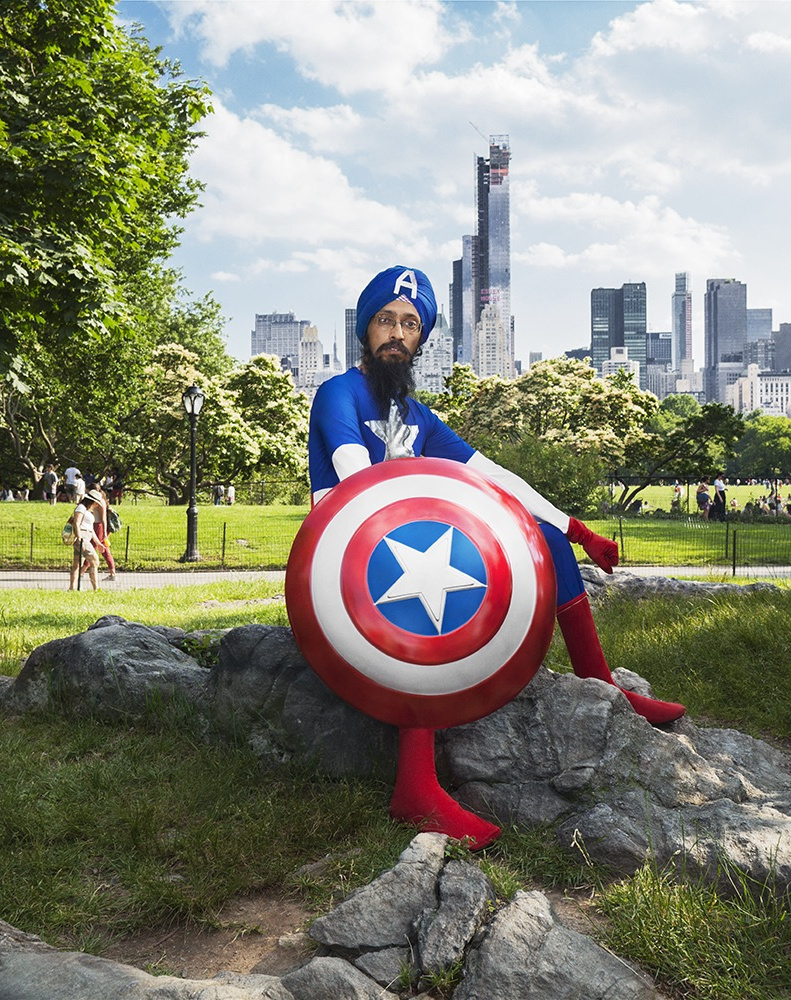I flew from New York City to the Portland airport last Sunday for my first-ever trip to Maine. The first curious eyes I encountered upon arriving were not on my turbaned and bearded countenance, but on my checked piece of luggage, taking a ride on the carousel.
Fellow passengers were giving it curious looks, and a few approached me with the query, “If you don’t mind, can I ask you what is inside this plastic luggage piece?”
“A metal Captain America shield,” I replied.
I am the nation’s only turbaned and bearded cartoonist, and I had the privilege of hosting cartoon workshops and delivering the keynote speech at the Civil Rights Team Project conference last week at the Augusta Civic Center. Over 550 students from 41 middle and high schools across Maine attended the conference, supported by the Maine Humanities Council. I was here to share my story through cartoons, going beyond the shallowness of the stereotypes that are so often used to define us, confine us and prevent us from starting conversations.
I start my workshops always by posing two questions: “What are the first words that came to mind when you first saw me?” and “Where do you think I am from?”
The responses to the first question included “awesome turban,” “beard,” “Jafar from ‘Aladdin,’ ” “different,” “Indian” and “epic shoes,” among others. Answers to the second comprised a trip around the globe, from India, Pakistan, Africa and Arabia to the Middle East, Turkey and America.
Then they got to see me as a day-old baby whose race is listed as “white” on his birth certificate; a bespectacled second-grader; a turbaned high schooler; a ponytailed college student; a short-haired graduate, and a man with a very short-lived mohawk, followed again by a turban. I donned it after embracing the Sikh faith I was born into – and just before the tragedy of 9/11 changed my life forever.
Out of this tragedy and the hate crime wave that followed, I found a creative spark from an editorial cartoon that exposed the violence fueled by the deadly confluence of ignorance, fear and stereotypes.
I have been creating cartoons full of turbans and beards since. To me, humor has been my refuge from labels hurled my way: “Osama,” “Taliban,” “terrorist” and “ISIS,” among many others, changing on the whims of the news cycle.
In the second half of the workshop, I got the students, primed with my story, to create cartoons of their own. There was only one rule: to create something fresh they have not seen before. Even the teachers got in on the action.
The range of the art created was amazing, from a baby librarian superhero, a girl with a tattoo that comes to life and a turbaned and bearded Sikh taking the oath of the office of president to a panoramic view of a “No Bias” island, an LGBTQ superhero, Batwoman with hijab and a disabled astronaut.
I thanked the students for creating a space, a safe space for everyone in their school to feel at home, to focus on what we go to school for: to learn, to expand our horizons, to question, to get answers, to start conversations, to build on our dreams, to discover our calling, our passion.
Stereotypes are something we all engage in. It is something almost hard-wired in us as social beings. Stereotypes themselves are not always negative; it is what we do with them that is the most critical exercise these students are engaging in.
We ended the day with the screening of a short film, “Red, White and Beard,” which gets to the heart of why I donned the Captain America uniform almost three years ago on the streets of New York City: to push our perceptions of what it means to be American.
As the students were ready to leave, I dashed out in my Captain America uniform, with the shield finally taken out of the hard plastic case, for a photo op with all the student teams.
Humans have a very complex existence. We have done some really awful things and some great things. The goal is always to be better. It’s a struggle.
The people out there who judge us are not purely bad people. Some might be. They have stories, and they have the potential to be kind. Maybe they are kind in other arenas of their life – home, church or work. Who knows? But they have that potential.
That potential is what these students are trying to focus on in life. We need to educate ourselves, practice the art of listening, standing up for what we feel is the right thing to do based on facts, our moral compass and sense of justice. We can disagree, but without vilifying the other person’s existence at every step of the way.
Send questions/comments to the editors.


